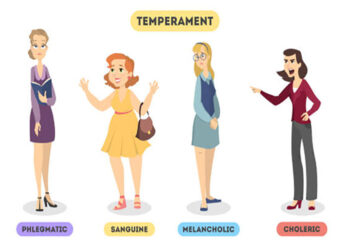
Brief History of Traditional Advertising
The history of advertising has undergone many leap innovations and milestones since it was first started. The emergence of the printing press in the 1440s and the invention of the television had a major impact. But it is still capable of surpassing its achievements so far. Thanks to modern technology and innovation.[1]The History and Evolution of Advertising – tintup.com
The beginning of advertising dates back to steel carvings made by the ancient Egyptians. The Egyptians made papyrus to make sales messages and wall posters as a means of advertising. Commercial and political campaign displays have been found in the ruins of Pompeii and Arabia, ancient Greece and Rome. Wall or rock painting was another form of early advertisement present in many parts of Asia, Africa, and South America.[2]History of advertising – Wikipedia
Town criers and sign boards became another means of disseminating information to a larger audience in ancient towns and cities. Initially, town criers were appointed by government officials to call out official announcements to the general public. Not before long, private individuals began to employ public town criers to act as auctioneers.
Soon after, itinerant hawkers developed a system of street cries to promote their goods and services. This acted as the mainstay of advertisement of goods and services before the advent of mass media, and it is still practised in most parts of the world today.
Signboards or commercial signage dates to antiquity. Retail signage appears to have developed independently in the East and the West. In ancient Egypt, Rome, and Greece, these were displayed on shop fronts to announce public events such as market days. China also has a rich history of early signage systems. Also, in Medieval Britain France, and much of Europe, inn owners saw an increasing need to erect sign-boards in front of their stores.
The Advent of Modern Advertising Formats
The development of mass media revolutionized traditional advertising. These involved new formats like advertisement sections of newspapers and television broadcasts. Individuals and organizations could publish commercial and political adverts in those sections where they will be seen by thousands of people and organizations.
Shortly, the world of advertising was once more revolutionized with the invention of the internet. Advertisements can now be published at a global scale, and can also be targeted to any particular category or group of people. This is still only the beginning of modern advertising as newer technology is setting the stage for more advanced methods and formats of advertising.
Newer technologies since the internet not only changed the way ads are broadcasted but also changed the way consumers act and interact with them. Let’s, at this point, get a glimpse of some of the newer advanced advertising technology currently on the way.
Merging Newer Technology With Traditional Ads
In today’s fast-paced digital era, the advertising landscape has evolved into innovative technological tools that allow users to interact with what looks like traditional ad content in unique ways that have never been seen before. This enhances reach, and user engagement, as well as ensures that the right audience hears the message in the most compelling and engaging way.
The internet brought with it a changing dynamics of life and social interactions. Social media also revolutionized how advertisements how displayed to users.
In this age when people have access to a lot of information in their pockets, driving engagements with traditional roadside advertising can be challenging. However, with the integration of advanced digital technology, traditional roadside advertising methods can be brought back to life. Digital technologies like LED screens, interactive displays, and augmented reality (AR) have transformed traditional billboards into dynamic and interactive experiences.
Benefits of Merging Modern Technology into Traditional Ads
Traditional advertisement is still one of the best ways to advertise to local dwellers and people closest to the source. Hence, the ultimate goal of advertising is not to phase out traditional advertising but to find ways to make it more immersive and engaging for viewers by the roadside.
Here are some of the benefits of merging modern technology into traditional advertising.
1. Enhanced consumption of ads
In contrast to static traditional ads, interactive display technology in traditional ad formats enhances the active engagement of passersby with the ad content. People are more prompted to look towards the advertisement if it displays dynamic content, pictures, and videos, with or without sounds.
2. Enhanced engagement with ads
The integration of interactive digital enhancements like touch screens or motion sensor technologies into traditional advertising can enhance users’ participation with traditional ads in ways that could never be possible. Now, you can have an interactive traditional ads screen by the roadside that users can click for options that suit their preferences and needs.
3. Interactive Experiences
New technology also helps bring status billboards to life by overlaying digital content into the physical world. An example is the integration of augmented reality devices, virtual reality, or interactive mobile apps into traditional advertising. For example, a fashion line can allow users to try on virtual outfits using their smartphone or tablet, giving them a feel of how they would look and fit on their body without actually being to the showroom. New technologies like AR glasses and immersive digital technology have made this possible.
4. Data and analytics
Integration of modern technology into traditional ads allows for the acquisition of analytics data from users like demographics, preferences, and behaviours in a way that can give you insights into how to improve your services or quality of advertisement at a later time. Unlike purely traditional billboards and paper billboards, digital technology integration makes it possible to track user experiences and other analytics from advertising on the roadside.
5. Improved audience targeting
Incorporating modern data-oriented strategies into traditional ads allows businesses to deliver more targeted content to users through the right channels. By analysing user demographics and preferences, you can deliver adverts specific to their own needs in a traditional ad format. Leveraging data allows the advertiser to create personalized content, or identify the most effective advertising channels and strategies, as well as optimise their existing campaigns based on real-time data analysis.
Conclusion
Traditional ads have their advantages in delivering local ads to people living in the same area as the opportunity, goods, or services. However, they are limited in several ways. Since the introduction of the internet and modern technologies, these lapses have been further accentuated.
Traditional advertising cannot easily be completely phased out but integrating modern technology into traditional ad channels like billboards, posters, etc can bring them to life and improve their performance. This post explored the history of advertising and important highlights about integrating modern with traditional advertising.

















